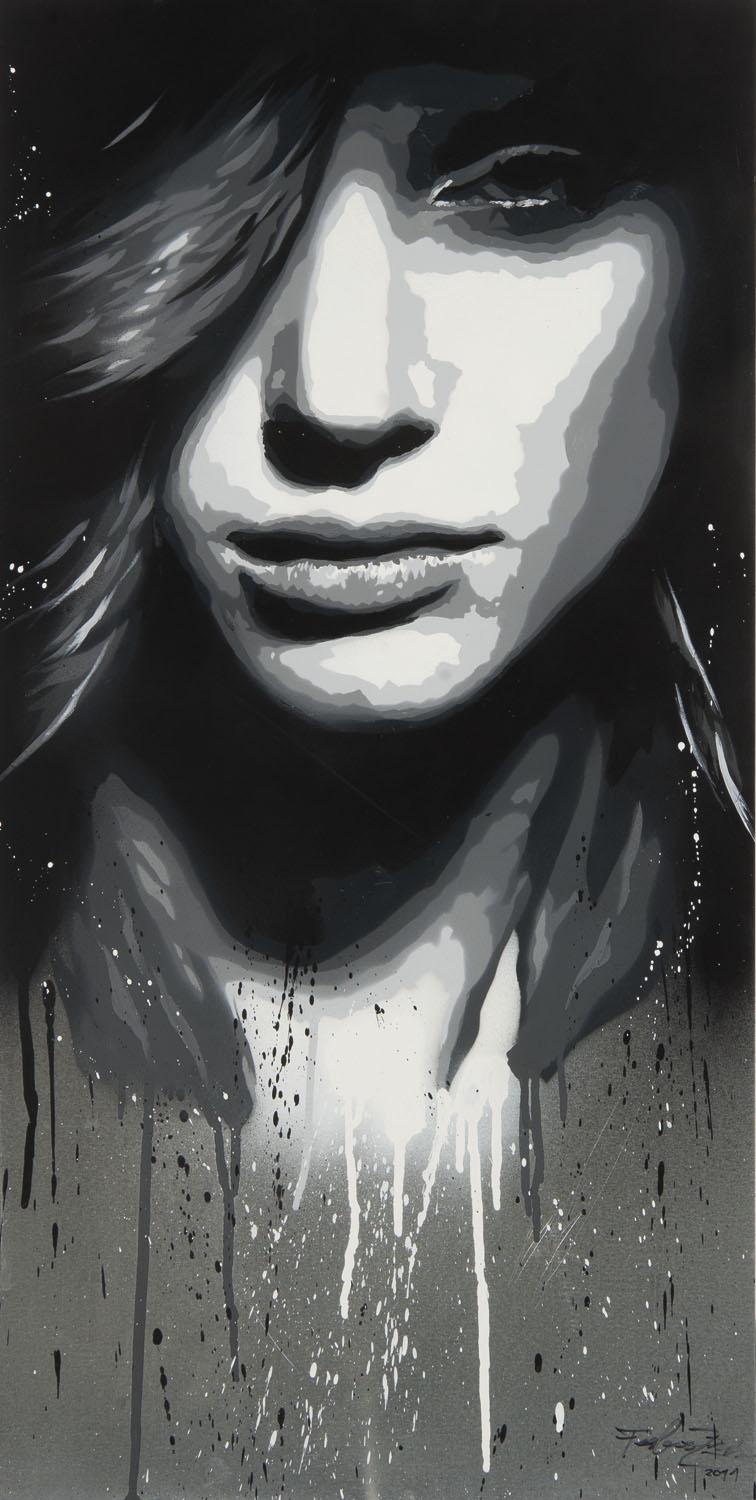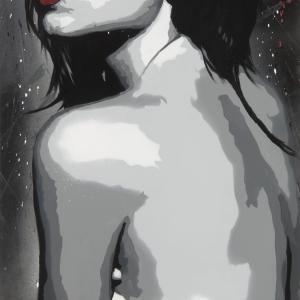This inheritance is more up-to-date than ever and it is universally attributed to great artists who have influenced its history. Artists ranging from Keith Harring to Banksy, with their “urban raids”, have not only influenced but also created a universally accepted code which is used and repeated in thousands of contexts.
You don’t necessarily have to go into the psychology of the work of art or analyse the intrinsic meaning from a sociological point of view, but the power of the figures captures the observer and the artist’s skill leads him and almost distracts him, but only apparently, from the content.
For some time now I have been pointing out that a wise approach to artistic marketing is “to leave it up to the artists to communicate, not to the publicists”. This would represent a return to communication made up of content and symbolism in accordance with tradition, shying away from false myths.
Federico Zenobi, who belongs to the big family of communicating artists, is used to working with his very efficient technique in large spaces and he accepts, and does not contest the fact, that mural art is destined to end before being completed.
In other words, a mural artist knows that the interaction with his viewers is direct, not mediated, and therefore it can be altered at any stage, even an instant after its creation by somebody else or by the natural elements
By nature, mural artists love open spaces and usually challenge museums. They are the futurists of our time who contest their surroundings as well as the art world. Their aim is to communicate through their work of art regardless of how long it lasts, whether it be only a few seconds or a number of years.
However, we have recently witnessed an evolution in the development of many mural artists mainly because of the desire to make the art-work permanent, “to historicise it”, as one would say in jargon.
Now it is a must to switch from a volatile situation to one which confirms what is being done. Zenobi has started to do this differently from many of his colleagues who record some of their works, without filming their performance, and make them into videos. In this way they transfer their work from the street to a technological support where it is easy for a good artist to have hundreds of thousands of contacts.
Federico has taken a different route, as this exhibition illustrates, because he has decided to put himself to the test by producing small works of art, thereby completely overturning the matter.
The split: as I have been saying for some time, each artist has to have a point of break-away, otherwise it is not art. Federico’s challenge is linked to the material he uses – iron plates.
With these works of art Federico initiates a relationship with a material that is complex to use, but which gives a sense of duration.
In the collective mind, steel has always represented something indestructible, impenetrable and incorruptible. The provocation lies right where the matter is overturned, as if he intended to protect his works from the passage of time, in contrast to other wall-paintings which are created in order to be corrupted, almost not to exist. These works intend to assert his “I am”.
Federico’s artworks are about existence as his young women’s faces, which we always believe or want to believe as being unaffected by the passing of time, clash with the imperturbability of the material. Zenobi’s paints scratch the surface of the eternal to imprint his women. Beautiful women, that only the artist can dare to make immortal, challenging the natural order of things which is man’s single, big enemy.
This is the challenge that the artist sets against time, that is a desire to regain control of something that belongs to him, something that life is taking from him with every instant that passes. Time is modelled by his strokes, like in the theory of relativity, the artist can mould things according to his will by immortalising and by discovering new ethereal and immortal dimensions.
The idea is reinforced by the strength of the material as the steel paradoxically emphasises the transiency and the fragility of the images. The artist’s technical skills succumb when faced with the alchemy of the senses that is evoked: “nihil est in intellectu quod non fuerit prius in sensu”. And so in this oblivion, the artwork takes shape leaving a powerful sign of its existence, away from large spaces and in an intimate dimension, which only one's inner being and soul can really understand.
Domenico Gioia








Comments 0
Say something